How to Clean Slate Tile Floors: 10 Simple, Sparkling Methods

In daily use, dust and dirt easily get stuck in slate floors’ crevices, and you have to clean them regularly but many people don’t know how to clean slate floors. The cleaning task is quite simple for normal debris; however, you can find it challenging when facing hard-to-remove stains such as candle wax, oil, and more.
There are different ways to deal with several specific stains, and if you care for your slate floors properly, their life expectancy can prolong, and they can maintain the beauty like the first days.
Do you want to explore these methods? Don’t hesitate to scroll down, and I am sure you will not be disappointed.
What Are Slate Floors?
Slate is one of the most common materials used to build various places in your home, and you surely wonder what slate floors are. As I know, the origin of slate is from fine-grained sediments, including volcanic ash or mud that were under the ground hundreds of decades ago to make layers.
When the layers become thicker, the mud is compacted into shale or mudstone. Nonetheless, the combination between subsequent intense geological forces and mountain building is key to forming a slate.
Not all slates are the same. The differences in the composition of mudstone and minerals such as grains, quartz, or clay will decide the slates’ quality. If you have a great wallet, you should choose the slate laid deep inside the ground.
The slate in the shallows will have an acceptable price. Depending on your budget, you can get the slate meeting your needs.
Sealed Vs. Unsealed Slate Floors
It is not random when I arrange this section after the introduction of stale; I would like you are aware of the differences between the sealed and unsealed slate floors and to help you know the importance of sealing in installing and maintaining your slate floors.
After building slate floors, you will soon realize that they start being dull or appearing damaged hints because of weather. To avoid this situation, you should seal them.
Sealing slate floors will help you protect them from losing their glossy finish and extend their longevity. Besides, when your slate floors expose to water, rain, or spill, you can easily face danger, and the sealing will prevent this risk as they are water-resistant.
In case you want to seal your floors, you should implement this before you grout them since when you reverse these steps, the grouting can penetrate the floors and destroy their look. The right orders ensure the grout messes on the slate floors will be easily removed.
The unwanted damage can happen when you don’t seal your floors. You can simply realize that the unsealed slate floors react with water, daily wear, and environmental factors in a wide range of ways, therefore, you have to seal the slate floors before using.
The unsealed slate places will be dull, and in high-traffic areas, these dull zones can become stained permanently, and you have to replace them. Unsealed floors are more porous than seal ones; therefore, they can absorb liquid messes quickly.
Unsealed slates are not good for your health and people who use them since fungi and germs will develop in them and cause many health issues such as allergies and respiratory problems.
You don’t need to worry about the sealants; most of them are safe for use and don’t contain bleach chemicals; so, people who have respiratory issues don’t have to be afraid of them. Make sure you seal your slate floor in well-ventilated rooms, and your floors have been tidied up already before applying sealants.
How To Clean Slate Floors?
Slate is a popular choice for flooring. Slate floors don’t require much maintenance like marble or other floors, but not much doesn’t mean you can freely use them without any attention. You still need to clean them frequently and treat stains completely to keep their gorgeous look and durability.
Here is a detailed guide to clean your slate floors. You don’t need to worry about water permeability on these floors since the sealed slate is water-resistant.
Step 1: Rearrange Your Funiture

It is not easy to access tight places or under furniture, and you can leave dust and dirt after tidying empty zones. Therefore, you need to rearrange your things in the large corner or move them to outsides.
If you place them in your yard, you should wrap all things with a plastic tarp to avoid sudden rain. Remember not to stack them to protect their surface from scratching and not drag them on floors when you transport them to avoid damaging the slate surface.
When all things are neat, the cleaning process will be shortened since you don’t need to bend to tackle messes in hard-to-reach areas, and you can fast check whether you miss cleaning in any corner.
Step 2: Remove Dust And Dirt From Your Slate Floors
This step is essential to make sure your floors are clean completely before going to the next steps. You don’t underestimate it since this work will help you eliminate large debris to avoid scratching your floors.
There are 2 ways for you to tidy up the slate floors: using a vacuum cleaner or a dust mop. In comparison to the safety for them of 2 options, I estimate highly for a dust mop with a microfiber pad.
The microfiber pad is designed with triangle bristles to quickly lift up dust and dirt and simply enhance removing debris hiding in the narrow crevices. You just need to glide it in one direction on your slate floors, and almost messes are tackled.
A dust mop is quite lightweight and sold at an acceptable price; therefore, you can handle it with ease and purchase without any barrier.
Another choice is a vacuum cleaner with adjustable height. This device is a perfect option for busy people who want to finish this step as prompt as they can, and you will need to spend a lot of money on this modern machine.
However, not all vacuum cleaners are suitable for this task; you should pick the one equipped with a soft-bristled broom or sponge brush and hard-floor mode to support you in optimizing the cleaning process.
You shouldn’t purchase a vacuum cleaner that is produced specialized for carpets since its operating principle is to loosen debris then lift and tackle them; this will cause serious damage on the slate surface.
You have to choose a vacuum coming with some attachments like a crevice tool to pick dust and dirt in difficult-to-access areas.
Step 3: Treat Stains On Slate Floors
You have to know even your clean up your floors regularly, the stains still appear, especially in the grout. As you know, the grout is porous and easy to absorb any liquid on floors; this is the main reason for causing stains.
Candle Wax:
What you need
- A dull knife
- Ice
- A paper bag
- An iron
- Paper towels
- Paint thinner
- Rubbing alcohol
- A cloth

The significant information for you is you shouldn’t use petroleum candles since they are made from strong dyes and will leave stubborn stains that hard to remove. For normal candle wax, you can imitate the following steps:
You have to use an ice cube to make the wax harder by rubbing on it. A dull knife can easily eliminate the hard wax, and you should choose a knife as dull as possible to avoid hurting your hands.
In case all wax cannot be removed by using a knife, there is a hack trick for you. You will select some paper towels or a paper bag to put on the remaining wax. Afterward, you have to plug in the iron until it heats up and place it on the paper towels or paper bag.
You can stop this when the wax absorbs the paper and realizes there is no wax on the floors. Keep in mind adapts heat-up settings at the lowest temperature to avoid burning the paper.
Even all wax is gotten rid of, there might be dye on the floors, and you must clean it up thoroughly. You will dip a dry cloth into alcohol and use the damp to wipe the dye until nothing stays.
If the stains are too tough, you will use a more powerful approach to pour a little alcohol directly on the messes, then put the paper towel over them and press it firmly. You have to keep this situation for several hours or until the dye dries entirely and all the dye will soak into the towel.
Suppose the stains remain; let’s try to use the dilute paint. However, you had better use this approach on a small and hidden area to check your slate floors’ effects. If it is safe, you can pour a little on the messes, leave them for about 1 min, then use a cloth or a paper towel to absorb the excess liquid.
The last step is to rinse this zone with clean water, and you will get the clean slate surface.
Rust:
What you need:
- Distilled water
- Iron out
- A cloth
- A scrub brush
- Kerosene

For rust stains, you cannot use chlorine bleach since it will make the stains darker.
For safe, you have to wear high-quality gloves and a long-sleeve shirt to make sure your hands will always be safe from these chemicals.
The combination of iron out and distilled water at a reasonable rate will make a past form. You need to spread this paste over the rust messes with a thick layer.
Till now, you can do other things and come back to check after an hour.
The scrub brush will help you rub the mixture and the stains. After scrubbing, let’s rinse these messes entirely with clean water.
If the messes’ status is improved, you can repeat this process until you find them clean as you expect.
Conversely, the stains seem difficult to remove; you can leave the cloth soak into kerosene and use it to wipe the stains. Afterward, you must rinse well with water till all stains are gone.
Oil Or Grease:
What you need
- Cornstarch
- Baking soda
- Mineral spirits
- Newspaper
- A vacuum or a dust mop
- Dish soap
- A stiff-bristle brush
- Brake cleaner

Don’t forget to wear gloves before starting cleaning up. To avoid undesired situations, let’s test on a small zone to ensure there is no effect on your slate floors.
Sprinkle with a generous amount of cornstarch over messes to allow it to absorb oil or grease
For fresh stains, you just need to wait about a few minutes before sweeping or vacuum them. If the messes are old, the time will be longer for up to several hours or overnight.
You can repeat the above step until the stains are removed completely, then going to the next steps.
Create a thick paste by mixing baking soda with some water at a suitable rate. Just mix for one use as it is quite hard to store the paste like the original condition. You will apply the mixture to the stains and leave it dried. When they dry, you can vacuum the messes.
You will need to use mineral spirits over them for tough messes and allows the spirits to penetrate them for about a half or one hour. Afterward, a stiff-bristled brush will help you scrub the stains to eliminate them; then, lay newspaper on them to absorb the excess liquid and wash these zones with dish soap.
To clean the most stubborn stains, you are forced to use brake cleaner, which helps you soak into oil or grease. After spraying this cleaner over the messes, you apply cornstarch or baking soda on these areas; the powders will prevent the messes from spreading when being washed with dish soap.
Pet Urine:
What you need
- Specialized cleaners for pet urine: enzyme cleaners
- A thick and dry cloth
- Soft brush
- Scent

Cleaning pet urine removes messes and eliminates unpleasant odors, and it is not hard like your imagination. Let’s see how to deal with this problem.
Moisten your slate floors before applying pet urine cleaners to messes to have the best results since these cleaners don’t soak into the floors
These cleaning solutions will work immediately once you pour them over these stains; therefore, you might not get the optimal result as you expect if you hesitate to scrub. You can stop rubbing the messes if they are covered with bubbles.
When you are scrubbing, always keep a dry cloth in your hands to blot the abundant liquid around your stains. The more liquid you absorb, the better results you can get.
You can repeat to ensure the odors are gotten rid of completely or use scents without acidity to add more pleasant smells to your floors. You can use cleaners are derived from enzymes to eliminate odor. These products are simple to find at pet stores.
Fresh Spills:
What you need:
- A dry cloth or a paper towel
You need to swipe them instantly with a soft dry cloth or a paper towel to avoid moisture can penetrate the grout.
Streaks After Mopping:
What you need:
- A nylon brush
- Dish soap
- Water
While mopping your slate floors, there are some stains that you can miss. Almost all of them are easy to clean with 2 materials that are easy to find in your home: water and dish soap. You can mix water with dish soap or apply a small amount of dish soap on messes, pour a little water, then starting scrubbing with a nylon brush. When you finish, let’s rinse well with water to avoid slipping.
Stains On Non-Colored Grout:
What you need:
- Hydrogen peroxide
- Water
- Baking soda
- A soft towel
For non-colored grout, the combination between hydrogen peroxide and water at a 1:1 dilution rate will help you solve the stains. You will spray the mixture on them and leave them for 15 minutes or more and repeat as needed. The hydrogen peroxide can act as a bleach, and that’s why it is just safe for non-colored grout.
In case the stains are not removed perfectly, you create a paste of baking soda and hydrogen peroxide, and don’t forget to leave the bubble to settle before using. Afterward, you can apply it to stains and let it dry; then spray the above liquid on them. Till now, you can use a soft and dry cloth to wipe these messes.
Stains On Colored Grout:
What you need:
- White foam shaving cream
- Warm water
For colored grout, the white foam shaving cream will support you., but you still need to test on a small area to ensure it doesn’t affect slate floors. You just need to apply the cream to the grout and wait for 15 minutes before rinsing the stains with warm water.
Keep in mind, after you eliminate stains from 2 kinds of grout, you have to reseal it as soon as possible to maintain the best result in the long term.
Step 4: Prepare Water And Cleaning Solution
You need to prepare warm water as it is better for eliminating dust and dirt than cool water. You can pour water into a bucket and mix it with pH-neutral cleaners. Besides using this kind of cleaner, you can also use mild dish soap or mild laundry detergent.
All cleaning solutions must be safe and gentle for slate floors to relieve eroding risk on the surface. Here is a formula you can reference for your task: a quarter of dish soap or detergent will combine with a warm-water amount on demand.
In case you use pH-neutral cleaners or any commercial liquid, please read all information printed on the packaging and obey its recommended dilute rate. Normally, the mixture is enough for a particular area. If your coverage is broader, you will need to adapt the rate carefully.
Step 5: Mop Your Slate Floors
This step will help you get rid of dust and debris perfectly. After mixing the cleaning liquid, you can use a manual mop dip into the bucket and wring until the excess water gets out of it. You need to use more force to deal with this issue; when you cannot wring it tightly, the mop is too wet and can create streaks after cleaning.
During the process, a spin mop is a smart choice. This product is designed with an integrated bucket to contain water and a wringer to assist you in wringing the mop effortlessly, and the abundant water simply gets out of it.
No matter which option you choose, you need to dip your mop again into when the mop starts drying and have to change a new batch if the water becomes dark. You should mop your floors slowly and smoothly to ensure all messes are swept.
If you or family members have issues with allergies or respiratory ailments and own pets, you need to use a steam mop for deeper cleaning. The hot steam will remove more dust and sanitize your floors. You can add more scents to the steam machine to create a comfortable home. You can choose a steam mop on-demand, or the steam mops under $100 are worth purchasing.
Step 6: Rinse Your Slate Floors
After mopping slate floors, you need to flush water on them to tidy up thoroughly the remaining soap. The cleaning residue will badly impact your skin, especially when you have babies or animals; therefore, rinse the floors will reduce these risks. Keep in mind not to do this step if you choose a steam mop for disinfecting your floors.
Step 7: Dry Your Slate Floors
Despite the sealed slate floors repel to water, you still need to dry them. Don’t leave them air dry; you have to swipe this surface with a soft cloth or towel to remove all remaining moisture since it can soak into the pores and damage your floors, then cause water stains.
You can change a dry new microfiber mop to wipe the floors quickly, and you don’t need to bend down like using a towel. In case you find another solution, don’t skip the top 15 best sponge mop will help you soak in water effectively.
Bonus Step: Apply Teak Oil To Your Slate Floors
The last step will enhance your slate finish. You will apply the teak oil when the floors are dry. You have to drop several oils off a clean towel and rub gently on this surface. Remember to use a perfectly dry cloth and not dip it into the water as the pores will soak into the oil.
If your budget is enough, you can apply slate oil to the floors as this oil is quite pricey. People usually select teak oil thanks to its acceptable price and the same effects on the slate.
What Should You Use On Slate Floors?
Although I mentioned cleaning methods for your slate floors in the previous parts, you should know more about the effects of some safe detergents on them to determine the suitable ones for you.
Hydrogen Peroxide

Hydrogen Peroxide acts as a gentle bleach; therefore, you shouldn’t apply it to colored grout to avoid damaging grout. You can mix this chemical with water and pour the mixture into a spray bottle to clean messes.
Baking Soda And Peroxide

The combination of baking soda and peroxide will provide you the strength to remove tough stains from your slate floors. You can mix them to create a paste from then apply the mixture to messes, including oil or grease.
An advice for you is to add each chemical a little by little to make enough paste for your stains since it is quite difficult to preserve it from hardening. This mixture is quite safe and mild for you to use on slate floors, and you don’t need to worry about any side effects.
Mild Detergent
Mild detergent might be the first method you think of when catching stains on your slate floors, but keep in mind it just can promote its action on fresh stains or streaks. You just need to use a nylon brush to dip into the cleaner and rub mildly on them until there is nothing behind.
Isopropyl Rubbing Alcohol

The Isopropyl rubbing alcohol is too strong to apply on your floors, and you need to dilute it.
Many cleaning professionals recommend you mix 4 cups of water with a half cup of isopropyl rubbing alcohol to make a perfect fluid.
Shaving Cream

Shaving cream is a suitable choice for colored grout. However, to ensure the safety is on your grout, you have to test it in a small place and follow its effects. . You will need to cover generous shaving cream on messes and wait for about 15 minutes before dipping a towel into the warm water and wiping them off.
Cornstarch

Cornstarch and baking soda are absorbent materials that are easy to find. Besides, you can also use cat litter to absorb any liquid spill on slate floors.
You need to pour cornstarch on messes and let it sit for 10 minutes on fresh stains and several hours on old ones. After that time, you can sweep or vacuum these messes to eliminate all residue.
You had better select cat litter made of clay as clay is more well-absorb than other materials. You cannot apply baking soda powder directly to stains; you need to combine it with a little water to create paste form.
Laundry Detergent

As you may not know, many producers have manufactured laundry detergents that are environmentally friendly and work quite effectively on slate floors. They are suitable for daily cleaning.
Slate Cleaners
To help you reduce time to mix cleaning solutions, the professionals have developed slate cleaners. Some cleaners are certified rinse-free, which means you don’t need to rinse the floors with water to remove all soap residue; so, they will save your time for cleaning, and you will have more time to do other things.
What Shouldn’t Use On Slate Floors?
Besides safe detergents for slate floors; there are some cleaners you should avoid using on them since they can cause damage to your floors:
- Abrasive cleaners cannot use on natural stone floors, including slate floors, since they can wear off the slate finish and lose the glossy and shininess. They will eliminate a sealer on your grout and slate floors. This exposure will make this slate porous and soak into moisture, then cause water stains.

- Acidic cleaners are the general name of various chemicals such as lemon, vinegar, and more. Once your slate floors are exposed to acidity, there will be a chemical reaction and damage to your floors that might result in repair or replacement.

- Suppose you have colored grout; you cannot use any cleaner containing bleach in its formula. Bleach will react with your grout and discolor it in several minutes. When your slate floors appear these blemishes, they can lose their eye-catching look.
- Using oil-based cleaners doesn’t damage your slate floors’ appearance, but they can cause accidents for you. These cleaners will make the floors slippery and create opportunities for dust and dirt can get stuck in sealed crevice. Both 2 results will influence your health.
Tips To Maintain Slate Floors
This section will bring you a few useful tips to help you maintain your slate floors better. Please don’t skip it, and let’s read carefully.
- The key cleaning solution is to clean up spills immediately. The more quickly you tidy, the more easily you can solve stains.
- The investment in a dust mop is worth expecting. You should arrange your work to sweep or vacuum your floors frequently. In low-traffic areas, you can dry-mop three or four times a week, while in high-traffic areas, you have to sweep them every day to ensure there is not too much dust and dirt in your house to protect your health.
- You can use vacuum cleaners with a sponge brush to tackle debris on the slate. If you use a vacuum cleaner equipped with a beater bar, it will chip your floors.
- You can place doormats in front of the doors to allow people to wipe their shoes before coming into the floors or the best solution is that you can equip them with shoe racks to remind people to take off their shoes.
- You cannot use rubber-backed mats on the slate surface since the rubber will stick mats with floors and destroy them.
- You should reseal your slate floors once a year. During the treat stains process, it cannot avoid damage to your grout in various ways. The grout is broken down, which will make your slate floors easy to soak into water or other messes and cause hard-to-remove stains.
- Suppose the stains are located in windy or hard-to-reach areas, and the pets can access to; you can apply cornstarch or any absorbent and cover them with plastic to keep them in place.
- For some organic materials, you don’t need to test them, but for other chemicals, you should apply them to a small and hidden area and watch their reaction to ensure your slate floors are safe with them.
- When you remove stains from slate areas, you will not have to apply sealant instantly. If the stains are on grout areas, you need to reseal them right after you eliminate them. The cleaning solution can impact grout; therefore, you should cover it with a sealant to prevent permanent messes in the future.
FAQs
Do you have any questions reading this guide? If you say yes, this section will be useful for you since I will answer them with all my knowledge about this field.
Expectation Vs. Reality
I hope you will find my guide useful and apply them immediately after you read it. However, you should remember that not all materials are effective on your slate floors since they depend on how long stains are located on them and how hard they are.
I suggest you try to use one by one or a method you find strong enough to remove messes before calling cleaning agencies’ help. Everything will be dealt with, and you can look on the bright side.
Have you applied any approach on your slate floors? If you have more effective tips or formula that works on messes, you can share with me by typing in the comment box below. I am really expected to hearing from you soon.


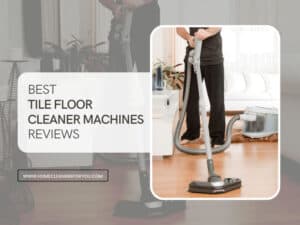
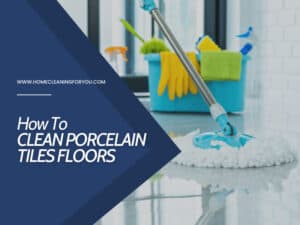
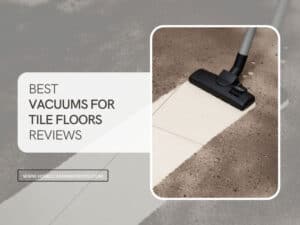
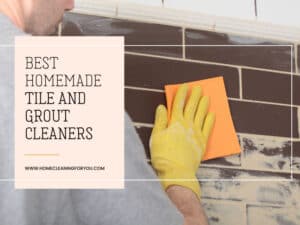
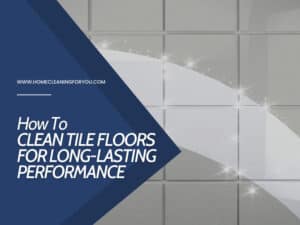
Kevin Jones
Founder & Chief Home Organization Strategist
Expertise
Home Organization & Decluttering, Efficient Cleaning Methods & Stain Removal, Sustainable Cleaning Practices, DIY Home Maintenance & Repairs, Space Optimization & Storage Solutions, Budget-Friendly Home Care Strategies
Education
University of Texas at Austin
Kevin Jones is the Founder and Chief Home Organization Strategist at HomeCleaningForYou.com.
He earned a Bachelor of Science in Interior Design from the University of Texas at Austin, focusing on space planning and sustainable design. Specializing in home organization, decluttering, and budget-friendly home care, he helps homeowners create functional and stylish spaces.
Kevin has been featured in lifestyle publications and has collaborated with eco-friendly brands on home organization solutions. He shares his expertise through DIY guides, workshops, and online tutorials. Passionate about minimalism, he enjoys testing new organization methods and exploring sustainable living ideas.